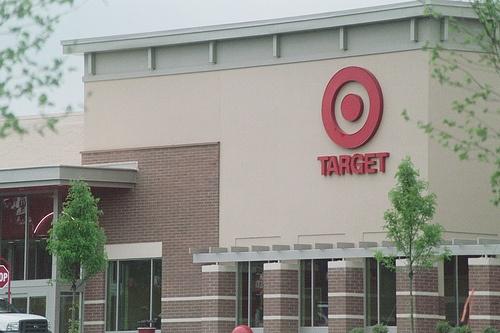Crowdsourcing Sunshine: Web App Advises Homeowners on Solar


A version of this story originally appeared on NoCamels – Israeli Innovation News
By Johanna Weiss
"Here comes the sun," the Beatles sing. And that makes us happy. Because not only does the sun shine free of charge, it could also be a great way to earn some extra money.
That's why Generaytor, a Tel Aviv-based startup, has devised a cool Web-based app that allows us to see in real time how much money we can make by placing solar panels on our roof. And IKEA has already adopted it to convince customers to go solar.
CEO and founder Amit Rosner says it all began when salesmen started knocking on his brother's door, trying to convince him to install solar panels and promising a good return on investment. Even though Rosner's brother lives in the sunny state of California, Rosner says, "It was incredible to see how long it took him before he decided to do the right thing and go solar."
Rosner says his brother's experience showed him how complicated the decision-making process is for people who are not familiar with solar energy. "Since it is a long-term investment, it is important to make an educated decision," Rosner says.
Rosner's own educated decision was to help people in their own decision-making process. He quit his job, co-founded Generaytor with Idan Ofrat and Paolo Tedone, and raised raised $1 million in 2012. The outcome is a platform that connects novices with people who already generate solar energy and are ready to share their experience with those who want to learn more about it.
Crowdsourcing sunshine
Generaytor's concept is simple: On one side there are people who already produce solar energy. Some are idealists who want to be independent of the public electricity supply (which in most countries is still based on fossil fuels). Others do so simply because they consider it to be a smart investment. Whatever the reason, Generaytor found that many of them are happy to share their experience and data related to their solar energy production.
Generaytor then gathers information about users' roofs, such as size, location and shade. It accumulates data from private solar producers region-by-region and, based on that, offers calculation of the solar potential in different locations.
Basically, users can go to the website, type in their roof's specifications and the app will show them how much electricity they can produce. Generaytor says it's important for them to be objective, and they do sometimes tell users not to invest in solar.
“As sunshine does not cost anything, we think the same should be true for the knowledge around solar energy – it should be for free and easily accessible,” Rosner states, explaining how this perception led to the business model. Generaytor’s services are free for homeowners. There are no advertisements on their webpage and Generaytor does not sell any panels themselves. “This is important, because if we [sold advertisements] we would not be objective, we would lose credibility and miss the whole point of creating a transparent platform where people can make a sound decision in a trustworthy environment."
Unilever extends sustainable deo format


FMCG giant Unilever has extended its compressed deodorant aerosol format to its four male deo brands.
Just one year after the launch of the award-winning technology, Unilever has sold approximately 12m cans of compressed deodorant, resulting in an aluminum saving of 77 tons – equivalent to 38,000 bicycles.
The new cans require up to 50 per cent less propellant but last just as long and use up to 25% less aluminum. The company says that switching to the new compressed can reduces the overall carbon footprint of the product by up to 25%. This takes Unilever closer to its challenging Sustainable Living Plan targets of halving the greenhouse gas impact of products across the lifecycle and the waste associated with the disposal of products by 2020.
Richard Swannell, director of design and waste prevention at WRAP, commented: “WRAP applauds Unilever’s leadership role in making this ‘step change’ in the aerosol format. This is exactly the type of innovative initiative that the WRAP is encouraging retailers and brands to explore as Courtauld Commitment signatories – delivering environmental benefits and added consumer appeal.”
Denis Hayes and the Cascadia Sustainability Movement


By Miles Knowles
When it comes to managing sustainability issues such as climate change or diminishing fossil fuels, one might presume that the greatest impact is achieved by targeting the greatest audience possible.
For the past 20 years, environmental legend Denis Hayes has relied on a different approach. Hayes became an environmental superhero by spearheading the first Earth Day in 1970. More than 20 million Americans took to the streets for teach-ins and environmental advocacy. He followed up by forming the Earth Day Network and expanding annual Earth Day events to 184 different countries. Former President Jimmy Carter named him the first director of the Solar Energy Research Institute (now the National Renewable Energy Laboratory).
After years of national and international success in furthering the environmental movement, Mr. Hayes shifted focus -- directing his attention to a region of the U.S. with a small but progressive population of concerned citizens. In 1992, Hayes was named CEO and president of the Bullitt Foundation, a Seattle-based grant-making organization. His hiring was met with skepticism from some local environmental leaders and NGOs. Hayes was an international celebrity with the ability to influence millions globally. How long could he be satisfied working on a smaller, regional platform? More than 20 years later, he’s still there, and the reasons are embodied in his approach to sustainable management.
For years, the Pacific Northwest has been a stronghold of progressive thought and motivated citizens -- exactly the type of audience open to addressing sustainability challenges. Before coming to Bullitt, Hayes’ advocacy work was directed at national and global audiences. Promoting a sustainability agenda on a huge scale requires convincing those who deny or remain apathetic to environmental issues. Narrowing his target audience to more like-minded individuals increased the efficacy of his actions. The Pacific Northwest is not completely devoid of sustainability skeptics, but it has the smallest concentration of them.
Secondly, Hayes identified a target region small enough so the resources at his disposal could make a significant and lasting impact. The Bullitt Foundation makes grants to nonprofits in order to "safeguard the natural environment by promoting responsible human activities and sustainable communities in the Pacific Northwest." Their target area includes Southeast Alaska, British Columbia, Washington, Oregon, Idaho and Western Montana. This bioregion has been referred to as “Cascadia” since the early 1990s. Its integration is deeper than one might think. In 2008, Washington, Oregon, California, Alaska and British Columbia signed the Pacific Coast Collaborative into law. The agreement seeks to promote coordinated policy in the areas of fishery and forest management, renewable energy, tourism and establishing a high-speed regional railway. The movement is more than simply cooperation on economics and policy, it’s an identity local residents buy into. Cascadia even has its own flag, The Doug.
The audience Hayes is targeting in the Pacific Northwest is not only receptive to sustainability issues, but willing and active participants. From volunteers to donors and involved citizens, the residents of Cascadia are pushing for progressive environmental action. This is not confined to the ballot box. The Bullitt Foundation’s dedication to public engagement enables Cascadian citizens to fund their sustainability projects through grants. “The Foundation seeks to identify the most talented individuals and most effective organizations and empower them to respond to the most important issues facing the region.” From 1999 to 2012, The Bullitt Foundation has authorized thousands of grants to over five hundred different organizations operating within Cascadia.
Perhaps the most ingenious element of Hayes’ approach to sustainable management is utilizing Bullitt as a force multiplier for transmitting Cascadian ideas worldwide. “Through its innovations in science, technology, commerce, and culture…[Cascadia] exerts a disproportionate national, and even global impact, relative to its size and population.”
Nowhere is this better embodied than in Hayes’ latest project, The Bullitt Center in Seattle. Otherwise known as “The greenest commercial building in the world,” The Bullitt Center goes well beyond LEED platinum standards, generates one hundred percent of its own energy and has net-zero waste. The effect showcases Cascadia as the regional leader of the U.S. sustainability movement and pushes the green building envelope globally. If in the coming years, possibly even months we will see a new “greenest building in the world,” It will likely be in Cascadia.
Denis Hayes did not create the Cascadia sustainability movement, but he has further enhanced the region’s efficacy in tackling sustainability challenges by means of advocacy, direct engagement and funding. This would not be possible without a realistic target area and a receptive and engaged target audience. Mr. Hayes’ Earth Day legacy will forever enshrine him as an environmental legend, but in his work at the Bullitt Foundation, he has truly found his calling as a leader in sustainability management.
Should We Applaud PepsiCo for Replacing "Natural" with "Simply" in Its Products?


If you’re a fan, just like me, of Natural Quaker Granola you might be surprised to find that your beloved granola brand has changed its name. It is no longer "Natural Quaker Granola" but "Simply Quaker Granola."
Don’t worry, though. Other than the name, nothing has really changed in the granola. This is just part of a step PepsiCo, the company that produces the granola, has taken to replace the word "natural" with the word "simply" in all of its products. Its "Simply Natural" line of Frito-Lay chips for example will be called now just "Simply," and so on.
Why has PepsiCo gone through the trouble of changing the names of so many of its products, omitting what seems to be a key part in the marketing strategy of these products?
According to Candace Mueller-Medina, a spokeswoman for PepsiCo's Quaker brand, this is quite simple. "We constantly update our marketing and packaging," she said. Apparently though, the answer is a bit more complicated.
It starts and ends with the fact that the adjective “natural” (or “all natural”), which for years has faithfully served food manufacturers due to its vague definition and the fact that many consumers believe it means "healthy," has become much more controversial lately -- to the point that companies like PepsiCo have decided they’ll be better off without it.
You might be surprised to hear how popular the term "natural" has become on product packaging. The Wall Street Journal reported last November that: "Food labeled "natural'' raked in more than $40 billion in U.S. retail sales over the past 12 months. That is second only to food claiming to be low in fat, according to Nielsen.” Just for comparison the organic food and beverage market was valued at $29.22 billion (2011 figures).
Yet, on a second thought, it shouldn’t be that surprising. After all, organic foods need to meet a relatively clear and rigid definition, while "natural" can basically mean anything, as long as it meets the FDA requirements of not containing added color, artificial flavors or synthetic substances. In other words, it’s probably cheaper and more profitable to produce and sell a "natural" food product than an organic food product.
So why on earth have PepsiCo and other companies decided to ditch it? In one word: litigation. "In recent years, advocacy groups have filed dozens of lawsuits seeking to ban 'natural' claims on foods containing ingredients that seem unnatural, especially those genetically modified," Prof. Marion Nestle explained on her blog.
And PepsiCo was no exception. As we reported here, PepsiCo announced last July that it will remove the "all natural" moniker from its Naked Juice product line for the foreseeable future and also agreed to pay $9 million to settle a lawsuit, in which the plaintiffs complained the fruit, vegetable and smoothie drinks contained ingredients that did not fit the definition of "natural."
I believe the company’s latest step of replacing "natural" with "simply" reflects its understanding that using "natural" has just become too risky for its brands and is not worth it anymore, especially when the company is looking to further expand its product portfolio of healthier foods and beverages -- which in 2012 represented 20 percent of the company’s net revenue.
Now comes the question of whether we should applaud PepsiCo for ditching the vague and sometimes misleading term "natural," or be worried that "simply" is just another marketing stunt to get us, the consumers, to believe that the products are healthier whether it’s true or not.
I believe it’s probably neither one of the two. First, PepsiCo probably takes this step apparently not because it understands that "natural" might send the wrong signals to consumers but because of a simple cost-benefit analysis showing the company using "natural" is not that advantageous anymore. If anyone should be applauded here it's organizations like the Center for Science in the Public Interest that act as watchdogs and file lawsuits against companies that it feels are misusing the term "natural." These organizations are the ones that transform "natural" from an asset to liability and get companies like PepsiCo to think twice before using it.
At the same time, I should mention that PepsiCo is not only busy with changing the names of its products, but actually tries to make some of them healthier as well. For example, as the WSJ reported, the company’s Frito-Lay snack unit reformulated more than 60 products by 2011, removing "about three dozen artificial ingredients including FD&C Red 40, a food coloring it replaced with beets, cabbage and carrots."
The bottom line is PepsiCo should be more focused on making its products healthier rather than on making their names better protected from future litigation. Simply, there’s no way around it if PepsiCo is really about "building a profitable and sustainable 21st century corporation" as it claims to be.
Image credit: Walmart
Raz Godelnik is an Assistant Professor of Strategic Design and Management at Parsons The New School of Design. You can follow Raz on Twitter.
Target's Latest Insurance Move: A Bust for Workers?


Target recently announced that it is dropping its part-time store employees from its health insurance. The statement has been used recently to bolster accusations by critics who say that the Affordable Care Act is a drain on U.S. taxpayers and is forcing employers to shirk their own responsibility to provide healthcare coverage.
Others say that the disqualification of part-timers by employers like Target, Walmart and Trader Joe's undercuts the effort to force the employers of some of the country lowest paid workers to improve how they do business.
"Major employers like Target should not be looking to taxpayers to subsidize an employee benefit they can more than afford to pay," said Carrie Gleason in an interview with Forbes. Gleason serves as executive director of the Retail Action Project, a nonprofit advocacy group that has been calling on big-box stores to improve their labor practices.
She has a point. The fight to improve labor practices in stores like Walmart and Target, particularly when it comes to benefits and a living wage, has been going on for more than a decade. It’s not hard to see how large companies that were encouraged years ago to improve their healthcare benefits for workers may be benefiting from the government’s new healthcare marketplace.
But the greater question here may be: Who really stands to benefit from the change? Would part-timers who barely make enough to obtain adequate healthcare insurance really be better off under an employer’s plan?
Under federal law, employers aren’t obligated to cover employees who work less than 30 hours a week. But as Sarah Kliff of the Washington Post points out, continuing to cover the few that do plunk down a co-payment for their insurance premium could, in effect, lock out others from joining the ACA Marketplace.
And it’s important to remember that no two insurance premiums are equal. Does an insurance plan offered to a part-time employee at Target or Walmart really provide the employee with adequate coverage? And at what price?
Under the ACA, low-income subscribers qualify for healthcare subsidies that ensure that the worker can get adequate coverage for a reasonable price.
Yes, that does mean that part-timers benefit from taxpayer support. But consider it a bit of a quid-pro-quo arrangement: The addition of those part-time workers (many who are young and healthy) to the ACA network from large national stores like Target, Walmart and Trader Joe's means tens of thousands of additional subscribers, who, in their own way are helping initiate a change to how we look at healthcare. It means more dollars in the system, and it means more healthy checkups and more healthy employees. It means the potential for less sick time from health complications when they do occur.
Best of all, it means a change to how we regard the responsibility of providing healthcare. Making healthcare a personal initiative isn’t such a bad thing. And viewing those changes as good for the community, even if it means more initiative by the individual at first, isn’t really a loss, either.
For its part, Target has announced that it will give each part-time employee $500 to cover their enrollment in an ACA healthcare plan. With healthcare subsidies that account for their part-time income status, that contribution will allow the employee to enroll in a far better plan than what he or she would have been able to afford on employer-provided insurance (which oftentimes isn’t co-paid by the employer when the worker is part-time).
Target’s decision to drop its part-time employee insurance may seem like a burden on taxpayers, but it’s also an investment into a new way of looking at good health as a personal investment that is better for the nation, as well as the worker.
Image credit: Sarah Gilbert
Psychology of Space: The Smell and Feel of Your Workplace


By Megan McAuliffe
How often do you think about space - that is, the space within your immediate environment?
Imagine for a moment that you live amongst trees. How would you feel? Would the sounds of the rushing leaves and the woody scents help you feel relaxed? What about how you see your surroundings, would the soft light filtering through the trees help put you into a moment of quiet contemplation. Your heartbeat would probably slow down considerably and your blood pressure would drop, as a sense of wonder and peace enveloped your senses.
Now think about your work environment. How does it make you feel? Do you feel challenged by the space around you, does it limit you or enable you? Does what you see, smell and feel help you relax and stay alert, or does it make your mind wander off into a wakeful dream-state?
The spaces we occupy shape who we are
Every minute of our lives is spent in physical dialogue with the space around us. The spaces we occupy directly influence our psychological well-being and creative performance. Space has the ability to shape who we are and how we behave. And, the fact that many of us spend large amounts of time, even years, working in the same space, it makes sense to optimize that space for maximum benefit.
Psychologists such as Kurt Lewin and Egon Brunswik conducted extensive work in the field of environmental psychology - which is the study of the relationship between the environment and its inhabitants. Brunswik found that psychology should give as much attention to the properties of the organism’s environment as it does to the organism itself. Overall, their studies highlighted the importance of incorporating psychology into the design of space and how, by manipulating space, one can control an environment and up to a point, its inhabitants.
Increasingly, urban planners, designers and business owners are tapping into the knowledge that a large part of how we define ourselves is caught up in the relationship we have with the places we occupy and the way in which we inhabit them. Actually, space has so much influence on the way we live that it can literally empower or disempower us.
Recently, Google released its plans for a new London headquarters, set to open in 2016, which will occupy a space of one million square feet and house an outdoor swimming pool, a full-length indoor football field, a climbing wall and a roof garden -- showing that the search engine giant takes its spaces seriously.
Googlers will have all their recreation needs met at work. They’ll be able to ride their bicycles into the building’s bike storage room, take a shower in the on-site facilities and ride around the building on micro-scooters. There will also be plenty of wide open space to use for networking and collaborating with others, in addition to the open-plan desk space to work autonomously.
The new Google space will provide more flexibility and room for relaxation and enjoyment -- a way to create contented and happy employees who will perform better and stick with the company longer.
Creating a cultural hearth drives connection
A study by architectural historian Charles Rice, "The Emergence of the Interior," found there was great importance in the understanding and implementation of interior design psychology on the performance, efficiency and well-being of an individual.
His belief is that we are missing out on the experience of connection in our fast-paced society, largely due to the high speed at which information is being hurled at us. In his work, he found that if we can address this lack of connection by creating a relationship with our environment, we can significantly improve our overall well-being.
Through his studies, Rice found that if we improve our relationship with the space we occupy and the objects within it, we can embody a sense of connection by creating a mythical fireplace, and the traditional experience of storytelling.
Urban designer Richard Wolfstrome uses this same philosophy when working with architects and local planners to design spaces in the urban community. With a narrative in mind, he unlocks historical stories and looks at the way people work, play and interact with the environment:
“We are human beings who have a capacity to emotionally connect to our landscapes. One of the best ways to do this is through story. Just like the indigenous cultures have done throughout time. Western society is starting to relate to this connection. Our ancestors are speaking to us in a way. It’s in our DNA. There is still a strong part of us that wants to sit around the fire and tell stories. And be a part of that hearth.”
Connection with space increases productivity
A study conducted by Dr. Craig Knight - which surveyed more than 2,000 office workers by looking at attitudes to a working space and how that directly affected productivity - found that most business offices have a model focused on "lean" functionality with little control by its occupants.
The University of Exeter’s School of Psychology study revealed that if employees are involved in the design and layout of a workspace, they are not only happier and healthier, but are 32 percent more productive:
“When people feel uncomfortable in their surroundings they are less engaged - not only with the space but also with what they do in it. If they can have some control, that all changes and people report being happier at work, identifying more with their employer, and are more efficient when doing their jobs.”
The bonds that tie us to our environment
David Ward , CEO of VW Heritage on the south coast of England, has boosted his company’s growth by creating an inclusive and ethical culture from the grassroots. The company’s staff retention levels are high, and they display a rare kind of loyalty to the business:
“Customers are important, but staff are even more important. It’s all about creating a good culture. If our staff are happy, then they are performing at their best, which in turn will offer the best possible experience for our customers.”
Ward intuitively knows that by including staff in the vision for the future they can be part of the success of the company. They also understand that their role is contributing to the company’s final goal.
“Our staff spend so much time at work, it’s important they feel involved in the environment they occupy rather than separate from it. An environment needs to enable and encourage a person’s productivity.”
Even though there is no universal checklist on how to attain "good company culture" and business profit, there is no doubt that a little shapeshifting in the office environment can lead to happier staff and higher levels of productivity. Let’s face it, when we’re feeling good, that’s when everything else in life flows.
Image credit: Julien Gong Min
Megan McAuliffe is a writer at www.vwheritage.com. She explores ethical business, sustainable living and culture. You can find her on Twitter @MeganEditorial.
Top Four Business Buzzwords For Winning Customers


The top four business buzzwords used today define how sustainable businesses are winning customers in the 21st century. These four key buzzwords (in order) are:
- Content
- Social
- Sustainability
- Transparency
These buzzwords are the building blocks upon which sustainable companies design products, operations and marketing. The following are best practices tied to these four business buzzwords that are proven to win customers:
Content
Content is by far and away the number one business word. It used to be that advertising volume defined customer awareness. Today customer awareness is defined by what people are saying about your business and its product.
Content marketing is an outreach strategy that uses social media to engage the customer on the customer’s key issues. The best marketing content for a business is a satisfied customer posting on a positive experience. The worst content is a customer’s post that exposes your company as untrustworthy and your products as harmful.
Sustainably run businesses have a huge competitive advantage in content creation. The key market segments of millennials and moms are actively looking for price competitive "in me, on me and around me" solutions. A company that posts content on its price competitive solutions will engage these key customers.
More importantly, a sustainably operated company will win customer postings on their experience using the company’s "in me, on me and around" product solutions. These customer postings are the top business path today for winning new customers. For example, the majority of millennial generation purchases are based on third-party product recommendations -- sourced from a complete stranger to the procuring millennial. Similar to "build it and they will come," having a sustainable and price competitive product will generate invaluable customer-sourced content that will attract more customers and grow revenues.
Social
Social is closely tied to content. Social is the collective engagement and sharing between your customers, and most especially, your potential customers. Social is what they are saying about your company and products without your direct participation.
The key business question is how to get customers and potential customers talking about your company and products. One sure fired path is to do something that is either really wrong or very right. Here are the top five product recalls in U.S. history and the social lessons-learned for how to win (or lose) customers:
- Tylenol. The crime of inserting poison into a Tylenol container while it sat on a retail shelf reshaped the product container industry. Johnson & Johnson had to immediately recall 31 million Tylenol bottles costing $100 million. What turned this from a disaster into an increase in Tylenol’s brand equity was the tremendous credibility Johnson & Johnson earned from aggressively removing Tylenol from retail shelves and then not restocking product until they had figured out a safer container. The social lesson learned is that customers will say good things about your company and its product (and buy your product) if your company acts responsibly.
- Ford Explorer/Firestone tires. Graphic pictures of horrific accidents swamped the efforts of these huge companies to "contain" the damage inflicted on their credibility and sales. This is my No. 1 supply chain coaching lesson on the value of green supply chain practices for minimizing operating and product risks. This product crisis resulted in Ford ending its historic supplier relationship with Firestone.
- Westland/Hallmark ground beef. This recall was sparked from a video posted by an undercover Humane Society person. Today, nothing is secret. Everything your company does will be captured on video through smartphones, and it will be posted on social media. Do right or perish under an avalanche of viral videos.
- Lawn Darts. This product endangered children. It was sold in the 1980s before social media. Can you imagine the viral YouTube videos if it was sold today?
- Sunland peanut butter. This product was recalled over product safety. There are now more than 2 million mommy bloggers. Sites like Care2 are followed by tens of million of women tracking human health causes and information on product safety. An absolute business best practice is NEVER sell a product that threatens the safety of a mom’s love ones. This is a lesson the fast food industry is learning the hard way.
Sustainability
Sustainability is directly linked to the top two business buzzwords of content and social. Sustainable actions by companies create the content that sparks social messaging.
Yes, a price discount coupon will generate a ton of social media hits for a business. But it is content generated by a company’s sustainable practices and then virally shared by consumers through social media that will win new customers searching for products that align value with values. The classic example is Patagonia, a company that generates $500 million annually in sales and is strongly followed by the millennial generation. Their "Don’t Buy This Jacket" campaign set the bar on viral messaging tied to sustainability.
Transparency
Transparency is the marketing path for winning customer trust. Or, as a Walmart executive defined transparency, “We are all naked. So get buff.”
A transparency challenge for many companies is the economics of doing right. A failure in government policy from not assigning a price or tax to externality costs like obesity, diabetes and climate change is a huge challenge for CFOs -- who allocate capital based on an economic return on investment. Social media is radically challenging ROI decision-making based upon increased transparency on the total cost to the consumer from buying a product. Customers are looking past the retail price to assign a value proposition on a product that includes the externality costs it places on the consumer.
A dollar-menu item is viewed as costing much more than a dollar to an obese person with diabetes. Moms are looking past price to evaluate products based on how they impact the wellness of their loved ones. The millennial generation was born into climate change. They view the lower greenhouse gas emissions of an urban lifestyle and use of digital products as "cool with a purpose" alternatives to cars and suburbia. Transparency is the mirror into which all businesses must look to win customers who are using social media content in deciding what to buy and from whom.
Image credit: IMN Marketing
Bill Roth is an economist and the Founder of Earth 2017. He coaches business owners and leaders on proven best practices in pricing, marketing and operations that make money and create a positive difference. His book, The Secret Green Sauce, profiles business case studies of pioneering best practices that are proven to win customers and grow product revenues. Follow him on Twitter: @earth2017
Learning from the Atlanta Snowpocalypse: Urban Planning & Stakeholder Management


On Wednesday, Atlanta and its suburbs were brought to their knees by a minor ice storm. Thousands of people were stuck, sitting in vehicles, for as long as 20 hours. The lucky ones found refuge in schools, offices and Home Depots. CNN (based in Atlanta) has been going berserk devoting half their front page to the story with large font headlines asking "How did this happen? Who's to blame?" ... well, fundamentally, those are very easy questions to answer, and it's not about a lack of snow plows...
The Atlanta area (the central city and many dozens of independent suburbs) has been allowed to sprawl to as much as 100 miles in diameter (almost the size of Los Angeles with a third of the population). Almost none of this sprawl is navigable without a car. Even if you wanted to walk, sidewalks are missing. Transit may technically exist but is far flung and inconvenient. One hour commutes to work are not considered all that unusual. Mix this reality with a little snow and lack of coordination and you get unspeakable gridlock. So that's how it happened, and that's why sprawl is to blame.
The coordination problem (explained beautifully by Politico here) is a classic example of what happens when stakeholder management and coordination are lacking. If the city and suburbs had an action plan for communicating coming gridlock they could have at least been able to advise people not to attempt to drive. People would still have been stuck in one place but that would have been preferable to being stuck in their cars. Lesson one is therefore very simple: improve coordination across a disparate organization to ensure your stakeholders get a consistent message in time to avoid disaster.
The second problem is far more complicated and deep seated. Sixty years of cheap oil and cars-only development have given most people only one transportation choice. Any disruption to that single choice, be it snow, or a flood, or a fire, a surge in gasoline prices or an attack by Godzilla can instantly bring the entire metropolitan area to a standstill.
What's more, the sprawl that Atlanta is infamous for is not a problem unique to Atlanta. It's a fundamentally unsustainable development pattern that's been affecting every city in the U.S. for 60 years - though it's generally more pronounced in the South because most Southern cities' population booms have happened since the advent of the car. Even without ice storms the result is ever longer commute times, greater fuel consumption, woefully inefficient land use, segregation, real estate bubbles, swaths of abandoned land and just about every other urban ill you can think of. Lesson two is that sprawl is incredibly costly on a good day, a disaster on an ice storm day.
So what can we do with the sprawl we've got? Transit options are part of the solution. Case in point - a couple years ago I was in Seattle when a snow and ice storm hit. Seattle ground to a halt just like Atlanta and traffic backed up for miles in all directions. Despite being in a more suburban part of the area, I was able to simply walk to a nearby light rail station and make my way, more or less as scheduled, to the airport, unscathed. Granted, it was a mess, but I don't recall anyone spending the night in their car.
However, really solving the problem is not as simple as running a bunch of (very expensive) transit lines out to the suburban fringe. We've got to begin retrofitting suburbia. In a nutshell this means incentivizing or requiring new development to adhere to basic rules of walkability and transit accessibility. It also means loosening zoning requirements in some areas to allow commercial and residential uses to mix. It means creating bike cooridors and spreading out traffic to more grid-style streets so that all traffic is not funneled to a small number of massive arteries that can clog. It means replacing parking lots with greenspace and usable development. It doesn't have to cost billions either. Such changes can be slowly phased in over generations and most ultimately result in cost savings to both the private and public sector - not to mention insurance against ice storms.
If you've got 20 minutes, Ellen Dunham-Jones' TED talk sums up the opportunity nicely below:
Meanwhile, in Atlanta and elsewhere, Americans are already rediscovering urban life. However, if the real estate prices in San Francisco and New York make you cringe, you quickly realize that existing urban cores can only take so many more people before most of us are priced back to the 'burbs. If the suburbs have been nicely retrofitted then this won't be much of a problem at all. If we fail to act, then we might as well start living in our cars.
Burberry Commits to Phasing Out Toxic Chemicals from Supply Chain


The luxury brand Burberry Group PLC announced its commitment this week to removing all hazardous chemicals from its supply chain by Jan. 1, 2020. To achieve this goal, Burberry will set up "mechanisms for disclosure and transparency" for the hazardous chemicals used in its supply chain, as stated in a press release.
The company will start to prioritize its apparel by the end of June 2014. By July 1, 2016, Burberry will start to disclose the chemical discharges of its suppliers in the global South, and will remove all perfluorinated and polyfluorinated chemicals from its supply chain.
Burberry’s announcement comes just two weeks after Greenpeace’s Detox campaign targeted the company and moved people to urge it to detox its supply chain via social media. Greenpeace volunteers in six countries held protests at stores around the globe, "from Beijing to Mexico City," as the environmental group puts it.
A Greenpeace blog refers to Burberry’s announcement as a "another people powered victory on the runway to a toxic-free future." Thousands of people took part of the online campaign, which included a "three day social media storm," or protested in person. Greenpeace supporters sent Burberry messages, including more than 10,000 tweets. They also flooded the company’s Facebook page and used Instagram to "spell out the message to the brand in pictures." There are 18 other big-name brands that have committed to removing hazardous chemicals from their supply chains, including Zara, Valentino and H&M.
"Burberry has listened to its customers' demands, joining the ranks of brands acting on behalf of parents everywhere to give this toxic nightmare the happy ending it deserves,” said Ilze Smit, Detox campaigner at Greenpeace International. "Burberry's move raises the bar for the luxury sector. With the Fashion Weeks coming up, brands like Gucci, Versace and Louis Vuitton risk getting left behind."
Greenpeace conducted an investigation into hazardous chemicals in children’s clothing and footwear - the results of which were published earlier this month. As part of the investigation, the group examined 82 children’s clothing and footwear items purchased in May and June 2013 in 25 countries around the world, and manufactured in 12 different countries. Burberry was one of the clothing lines purchased. Other brands included American Apparel, C&A, Disney, GAP, H&M, Primark, Uniqlo, Adidas, LiNing, Nike, and Puma.
Greenpeace sent products to the Greenpeace Research Laboratories at the University of Exeter in the U.K., and from there they were sent to independent accredited laboratories. All of the products were tested for the presence of nonylphenol ethoxylates (NPEs), and certain products were tested for phthalates, organotins, per/poly-fluorinated chemicals (PFCs), or antimony. All of the chemicals tested for were detected in the sampled products.
An overview of just a few of the chemicals mentioned above indicates why Greenpeace supporters pressured Burberry and other companies to commit to phasing them out of their supply chains. Take nonylphenol ethoxylates (NPEs), which is described by Toxipedia.org as a "non-ionic surfactant" used in "large volumes." Studies show that they interfere with hormones in animals and may interfere with an animal’s development and reproductive systems. They are listed as an endocrine disruptor by the EU. Or take phthalates, which are used to soften plastic in a wide variety of products. Studies on animals have found numerous problems, including abnormal sexual differentiation.
Image credit: foeoc kannilc
First Out of the Gate: The Positive Ripple Effects of Community Development


By Leah B. Thibault, Director of Operations, CEI Capital Management LLC
As a steward of the federal New Markets Tax Credit program, our firm vets hundreds of proposed community development projects from around the country every year, all vying for a portion of this limited pool of credits. Each potential project is evaluated on the extent to which it will directly benefit the economically-distressed communities and residents where it’s sited: Will it create jobs? Is it an economically and environmentally sustainable enterprise? Does it make business sense?
While these projects stand on their own merits, it often takes more than one new development to shift the overall economic trends in a community. However, being the first "out of the gate" in these historically under-invested areas can serve a catalytic role by attracting additional development and creating other positive ripple effects.
The Hanover Theatre for the Performing Arts in Worcester, Mass., is a prime example of a project supported in part by New Markets Tax Credits that spurred local investment and served as the foundation for additional development in the community. The $33 million renovation of this historic theatre received $30.15 million in New Markets Tax Credit allocation in 2007. Today, the Hanover Theatre hosts more than 180,000 visitors annually.
The success of the Hanover Theatre resonates well beyond its walls. As a popular arts and entertainment destination, it is driving more customers to local restaurants and hotels. Beyond the obvious, it also prompted the development of a five-acre solar farm in nearby Leicester, Mass., which provides nearly 80 percent of the theatre’s electricity. The project has also been instrumental in catalyzing the CitySquare development in downtown Worcester, which includes an $85 million development by the Hanover Insurance Group and a $21 million, 40,000-square-foot cancer treatment center. All of this unfolding in a portion of the city that once was in a prolonged and steep decline. Ann Tripp, president of Hanover Insurance Group subsidiary Opus Investments/City Square, noted that:
"The Hanover Theatre’s tremendous success and its great potential influenced our decision to invest in CitySquare. The theatre is driving economic development in Worcester’s downtown district, and we have confidence that it will continue. It is helping to create the kind of favorable environment where other ambitious development projects can thrive. Successful developments such as the theatre serve as catalysts for other development projects, where each adds critical momentum -- bringing positive change and creating new opportunities for economic revitalization."
The Hanover Theatre is also at the center of a proposed 30-acre Theatre District, under development by the Worcester Business Development Corp. (WBDC), which includes the $15 million expansion of a local community college in a former newspaper office and printing facility. The new campus will support more than 1,200 students and administrators and will deliver an expanded selection of health science, adult education and workforce training programs. According to WBDC president David Forsberg, the Hanover Theatre made "a huge difference in that area, and that’s the foundation we want to build around."
Another gateway project funded with the help of New Markets Tax Credits is spurring economic development in a Rochester, N.Y. neighborhood. As recently as 10 years ago, the Brooks Landing area was home to a number of derelict buildings. But a public-private collaboration helped to begin the transition of this neighborhood into a welcoming community for both students and permanent residents.
Construction of Staybridge Suites at the University of Rochester is serving as the cornerstone for this neighborhood’s redevelopment. The success of this project encouraged the original developer to begin work on a second project in the area: a $20 million, 11-story, mixed-use building that will include university housing, a restaurant and a credit union. It will house approximately 170 students, and the university is expected to complete construction this fall. The new structure has also triggered the development by others of 29 residential housing units -- bringing another $5.2 million of investment to a long economically distressed and under-invested neighborhood.
As the expression goes, it takes a village. The project would not have gotten out of the gate but for the New Markets Tax Credit, along with support from the university, Christensen Development Corp., the city of Rochester, and various community groups and business associations.
The positive ripple effect of community development funding is not limited to urban environments. This is evidenced by the impact of the Presque Isle Hampton Inn in far northern Aroostook County, Maine. Presque Isle, with a population of less than 9,700, is the largest city in this rural county which has been hit by more than 10 percent loss of its population over the last two decades as younger people have moved on to find better economic opportunities. Though the commercial center of Maine’s northernmost county, it lacked any kind of "flagged" or nationally branded hotel to accommodate business visitors and recreational travelers, limiting the number of overnight visitors to the area.
Since opening in 2009, the Hampton Inn hotel has accommodated a steady pace of guests and become a significant driver in the local economy. It was a deciding factor in helping the local Nordic Heritage Ski Center and the Maine Winter Sports Center secure the hosting rights to the 2014 IBU World Youth/Junior Biathlon Championships and the U.S. Biathlon Association’s World Cup in 2011 and 2016.
Both of these events bring hundreds of athletes and supporters to town, generating excitement for the event and revenue for local businesses. The availability and quality of accommodations were vital in securing these world-class sporting events, as the organizing committees must ensure that there are sufficient housing and dining facilities for athletes, coaches and support staff. According to Jane Towle, event director for the 2014 IBU World Junior Biathlon Championships, "The local service-based business community plays a critical role in our ability to host a successful event."
In each of these cases the New Markets Tax Credit encouraged private sector capital to support successful business outcomes in highly distressed communities. This obvious success created for the developers and investors has helped create the confidence for others to invest and support more sustainable businesses. Once "out of the gate," the positive ripples from these projects are felt by the communities, as they help support more jobs that lead to economic independence for the people who live there.
http://www.youtube.com/watch?v=CoccBGyT3hA